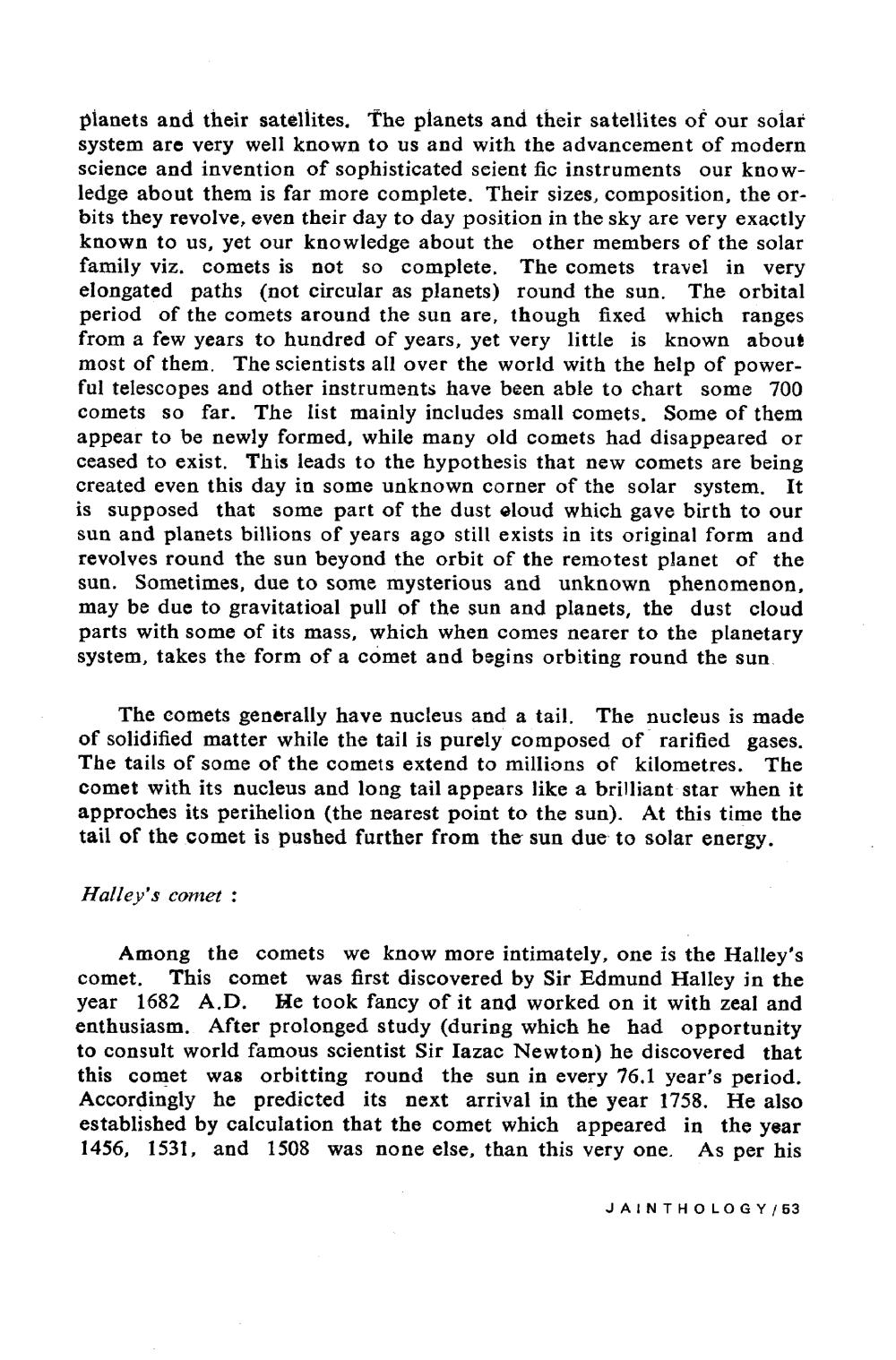________________
planets and their satellites. The planets and their satellites of our solar system are very well known to us and with the advancement of modern science and invention of sophisticated seient fic instruments our knowledge about them is far more complete. Their sizes, composition, the orbits they revolve, even their day to day position in the sky are very exactly known to us, yet our knowledge about the other members of the solar family viz. comets is not so complete. The comets travel in very elongated paths (not circular as planets) round the sun. The orbital period of the comets around the sun are, though fixed which ranges from a few years to hundred of years, yet very little is known about most of them. The scientists all over the world with the help of powerful telescopes and other instruments have been able to chart some 700 comets so far. The list mainly includes small comets. Some of them appear to be newly formed, while many old comets had disappeared or ceased to exist. This leads to the hypothesis that new comets are being created even this day in some unknown corner of the solar system. It is supposed that some part of the dust oloud which gave birth to our sun and planets billions of years ago still exists in its original form and revolves round the sun beyond the orbit of the remotest planet of the sun. Sometimes, due to some mysterious and unknown phenomenon, may be due to gravitatioal pull of the sun and planets, the dust cloud parts with some of its mass, which when comes nearer to the planetary system, takes the form of a comet and begins orbiting round the sun
The comets generally have nucleus and a tail. The nucleus is made of solidified matter while the tail is purely composed of rarified gases. The tails of some of the comets extend to millions of kilometres. The comet with its nucleus and long tail appears like a brilliant star when it approches its perihelion (the nearest point to the sun). At this time the tail of the comet is pushed further from the sun due to solar energy.
Halley's comet :
Among the comets we know more intimately, one is the Halley's comet. This comet was first discovered by Sir Edmund Halley in the year 1682 A.D. He took fancy of it and worked on it with zeal and enthusiasm. After prolonged study (during which he had opportunity to consult world famous scientist Sir Iazac Newton) he discovered that this comet was orbitting round the sun in every 76.1 year's period. Accordingly he predicted its next arrival in the year 1758. He also established by calculation that the comet which appeared in the year 1456, 1531, and 1508 was none else, than this very one. As per his
JAINTHOLOGY/ 53




